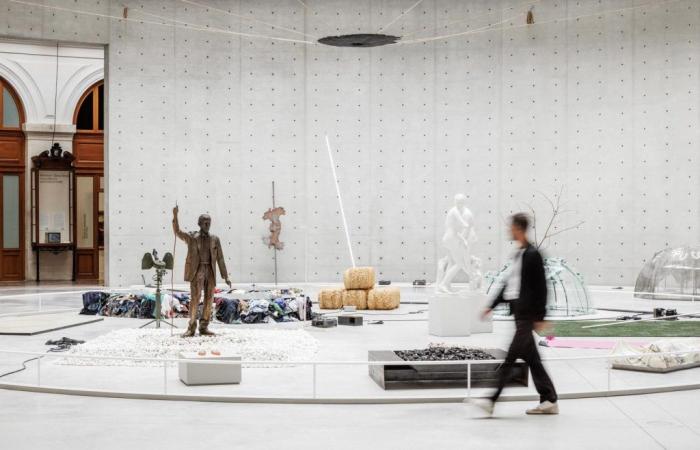
A at the Bourse de Commerce in Paris, the Pinault Collection presents the Italian avant-garde of arte povera, from its emergence in the 1960s to today. Also in the capital, the Vuitton Foundation is opening, in a few days, “Pop Forever”, a journey through pop art from the 1950s to its current forms. In 2023, the Pinault Collection showed “Forever Sixties” in Rennes, based on the same extensive definition of pop. In 2017, at Vuitton, “Art/Afrique le nouvelle atelier” bore witness to the emergence of contemporary art on this continent.
These events fall under what we usually call “major exhibitions”: based on the bringing together of a large number of artists and works, they affirm the desire to write or rewrite history in dealing with a movement, a notion, a period or a region of the world. Collective and international, they differ from monographic retrospectives, which have only one hero – more rarely a heroine –, respect the chronological order of the works and are therefore of a simpler design.
That the Vuitton Foundation or the Pinault Collection are simultaneously committing to such operations this fall is neither trivial nor a coincidence. For a long time, events of this type were, in France, the privilege of rare public institutions and, above all, of the Center Pompidou. In fact, in its beginnings, it based its reputation on a series of transnational exhibitions. The year the Center opened, 1977, was that of “Paris-New York”, a confrontation of the two capitals of modern art. Followed by “Paris-Berlin” in 1978, “Paris-Moscow” in 1979 and, more national and more discussed, “Paris-Paris” in 1981.
Read also | Article reserved for our subscribers For the painter Tom Wesselmann, a market in the shadow of Warhol
Add to your selections
Meanwhile, in 1980, the Center Pompidou studied the “Realisms” from the interwar period: there is therefore one historical exhibition per year during this period. This policy was desired and implemented by the Swedish curator Pontus Hulten, director of Pompidou from 1973 to 1981. This practice of exhibitions as a means of thinking about history is found, among other examples, in “L’Ame au corps . Arts and sciences (1793-1993) » at the Grand-Palais in 1993, which was a considerable event, because it posed questions between arts and sciences which had not yet been raised in this way. The model is also exported to Germany or the United Kingdom.
However, therefore, with “Arte Povera” and “Pop Forever”, the initiative for such events no longer belongs to museums but to private operators. It is difficult not to see in this change a sign which confirms this general diagnosis: the rise in power of the latter and, correlatively, the erosion of the influence of public institutions.
You have 54.02% of this article left to read. The rest is reserved for subscribers.





